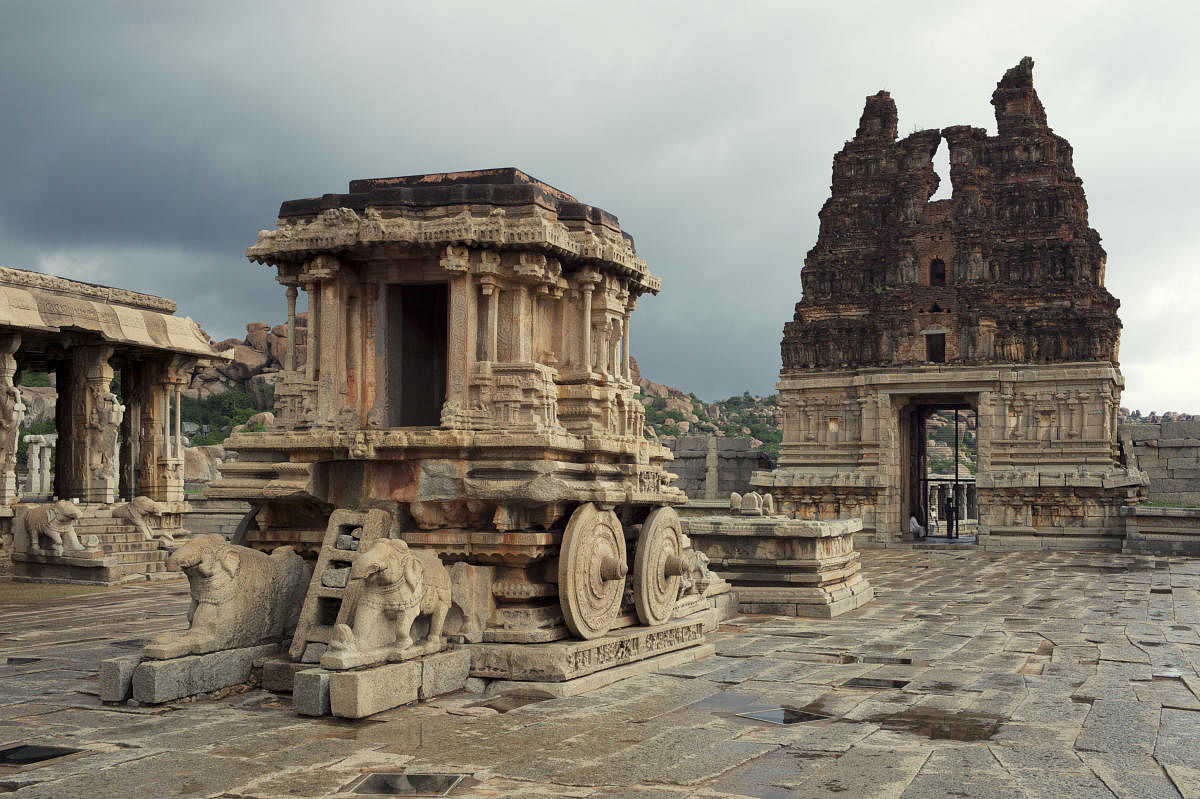
Even though the common Indian citizen thinks of Indian history as being centuries old, a formal study of our past has been focussed, over the years, on a comparatively recent portion of it: the Mughal Empire and on the British period. Multiple empires and eras from before have merged into an amalgamated ‘golden era’ in the collective imagination, with only a few folk heroes surviving in popular culture. Part of the reason is that the most conveniently available historical documents date from the East Indian Company era onwards — they’re in English, well-documented and preserved. Innumerable historical fiction books, set in India, written by Indians, tend to be from this era and derive from these sources. In contrast, pre-British sources tend to be in regional languages, poorly indexed by researchers and badly preserved.
Which is why, a welcome side-effect of this current nationalist era is a revival in popular media of the pre-British and non-British history of the country. Raya, by Srinivas Reddy, is a history of Krishnadevaraya, king of Vijayanagara, one of the last pre-British empires of India. The blurb calls him “South India’s greatest king” and that’s not far from the truth.
Multi-layered portrait
In the case of a king like Krishnadevaraya, there are multiple sources of history — from oral histories to plaques and hero stones in monuments of the era to history and verse by visitors to the kingdom and even treatises attributed to the king himself. Reddy works well with these versions of history, explaining the likelihood of each one when they differ and creates a multilayered picture of the man.
This is especially important during critical junctures in the story — how Krishnadevaraya took on the mantle of king, for example, or how the relationships with the Portuguese and with the Gajapathi kingdom of Odisha evolved.
Military campaigns and grants to temples and subordinates, on the other hand, are fairly well-documented. The court language of the Vijayanagara kingdom was Telugu and Reddy uses sources from both Telugu and Kannada in his research, not to mention Tamil, English and available histories from European visitors of the era. The end result is fairly convincing and cohesive and we emerge from the book with a deeper understanding of the era.
A tolerant man
A relatively modern theme that Reddy goes in depth into is the relationship between Hindus and Muslims of the era. Each religion was characterised by a multitude of sub-sects, he says, and tolerance or enmity was based more around political boundaries than around religion.
Krishnadevaraya is depicted as a tolerant man — the norm for the time — who allows all faiths to prosper. India’s relationship with Islam is wrongly viewed by the Right wing today through the Mughal empire’s filter — and we need to go back much further to understand the truth. The king himself, of course, is a devout Hindu and a devotee of Lord Balaji and Reddy recounts how he made multiple trips to Tirupati and donated to the expansion of the temple — records of those contributions are still publicly available today.
More culture, less politics?
If there is a fault in the book, it is an over-emphasis on the political and military. This is a common fault of the genre, the assumption being that the drawing and redrawing of government borders is the most significant feature of an era. But, as Reddy himself says — even kings of the era were required to be men of art and literature. Krishnadevaraya was known for his poetry and his research into music and earned the epithet of ‘Andhra Bhoja’ — the King Bhoja of Telugu literature. He also wrote in Kannada and Sanskrit. A deeper introspection into these aspects of the king would have given us a fuller picture. Similarly, more detail about the cultural and civil life of the kingdom would have been appreciated. Reddy does talk about Krishnadevaraya’s daily rituals related to religion and administration, which is welcome.
This reviewer received this book in an e-format and must attest to the ease of transport and receipt of the book. Perhaps, in this age of lockdown, ebooks are going to be the means to save the literary soul. However, this book may not be the best demonstration of the fact.
For one, it requires flipping to the map in the beginning, to understand the geography of the various battles. The appendix, which contains relevant footnotes, is nigh-impossible to refer to, while reading. There is some work to be done to make the format more usable.
In spite of these minor quibbles, this is a well-written, absorbing book. It gives us a clear picture of a personality who had a huge impact on the shape of India.